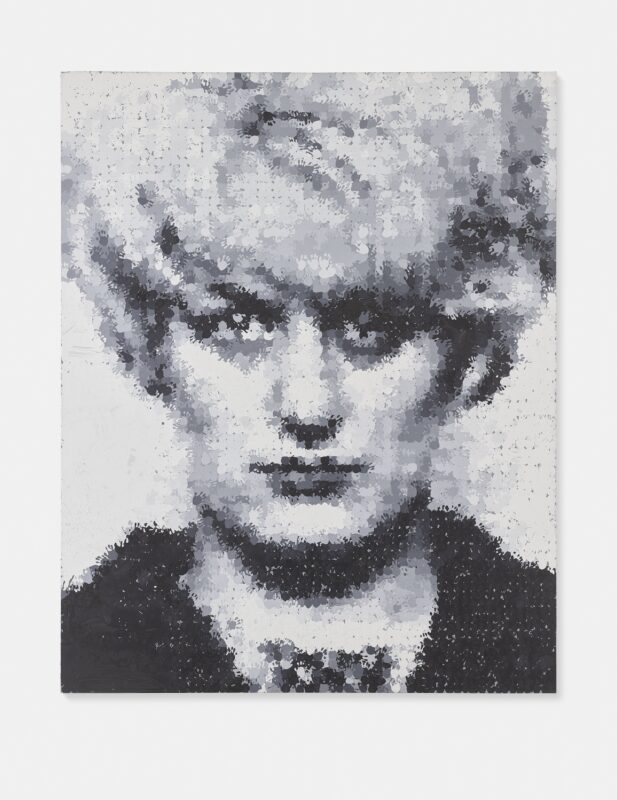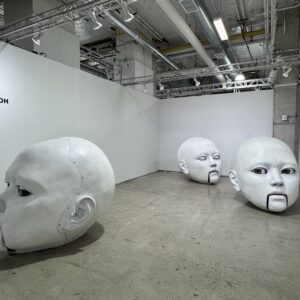Do you not feel that sometimes we become so swept up with the hidden meanings of art or with the artist’s identity that we forget to savour the sensation of art itself? While we often think of ‘aesthetics’ as being about the way things look, I want us to return aesthetics to the sense of sensation – I want us to start thinking about art as something we ‘feel’, metaphorically speaking, in experience.
Go out there and surround yourself with art and feel what it is like. Of course, as seasoned art people, we know the rules – no touching the art! But that just means the feeling of art is an imaginative, creative act on behalf of the viewer. After all, artists make art from different materials, not so that you can always touch them, but so that you can always feel different in their presence. Hungover from over-indulgence in identity politics, we need to return to the pure joy of materiality in art.
Let us begin with a story that sounds like a fairy tale, but that is entirely true. It is a story of regal determination and limitless devotion: in 1701, a nineteen-year-old alchemist, Johann Bottger, claimed to have discovered the elusive philosopher’s stone and promised to demonstrate the transmutation of lead into gold to Fredrick Zorn, to whom he was an apothecary apprentice. Gathered in Bottger’s tiny lab in Berlin, Zorn and a crowd of onlookers, watched in awe as the teenager boiled lead and added silver coins in a theatrical display. The next morning, analysis of the resulting product proved beyond doubt that the substance was, in fact, pure gold.
Fredrick I, King of Prussia, immediately got wind of this miracle and, in his hankering for gold to fund his extravagant tastes, demanded to see the young Bottger immediately. Unbeknown to Zorn, of course, Bottger had achieved this feat by sleight of hand: he had, at some point in the dramatics, substituted the mixture for pure molten gold. By the time Bottger heard of the King’s interest, the seeds of suspicion were already sewn in the town; King Fredrick requested an audience with the alchemist and, when he did not show up, had his guards capture Bottger and imprison him.
Bottger escaped and fled to Saxony, where he was this time captured by Augustus II, King of Sxony, known as Augustus the Strong. Imprisoned in Dresden, the famously greedy King whose profligacy outstripped his means, salivating at the prospect of unlimited gold, demanded Bottger repeat the demonstration. He failed, of course. Bottger was sentenced to try again, imprisoned in a dungeon; for years he made zero progress but always promised the King he was on the cusp of a breakthrough. Meanwhile, a mathematician named Ehrenfried Walther von Tschirnhaus was working on another elusive secret. Since it was nearly impossible to ship porcelain intact in large quantities from China, Tschirnhaus had resolved to work out for himself how to make it. The recipe, the arcanum, as it was known, for porcelain was much coveted, as much as the philosopher’s stone, leading to porcelain being known as white gold. Coerced by the King, Bottger reluctantly joined in the experiments in 1704, hoping that in the absence of gold perhaps porcelain could save him.
After years of captivity, toiling with the philosopher’s stone and always resisting Tschirnhaus’ control, in 1707 they hit upon the secret recipe for porcelain, initially using a mixture of kaolin, a clay that defines true porcelain, and alabaster, which turned Bottger’s fortunes around. When Tschirnhaus died in 1709, the entire operation was handed to Bottger and Augustus established the first European porcelain factory in the Albrechtsburg Castle in Meissen. Bottger, still imprisoned, was given more favourable conditions, including his own rooms and all he could eat and drink; descending into alcoholism, prone to fits of rage and driven mad by exposure to toxic fumes from the kiln in his unventilated lab, he lived as one of the King’s courtiers as he refined the recipe.
Although it took until 1713 to refine the arcanum enough to go into mass production, it was not until 1723 that Johann Herold worked out how to paint and glaze it as the Chinese did. In the meantime, having spent almost the entirety of his adult life a prisoner, Bottger was released in 1714 and appointed director of the Meissen factory but died in 1719. Along the way, an employee of the Meissen factory, Samuel Stoltzel, defected to Vienna and set up a rival factory in the race to develop perfect, true porcelain. Fortunately for the Meissen factory, whose employees were under the brutal control of the King, Stolzel was behind the curve because he hardly knew as much about the arcanum as he claimed on arrival in Vienna. True porcelain was not really achieved – glaze and all – at the Meissen factory until it began using its trademark to distinguish its wares around 1730. By 1760, the arcanum was refined and, crucially, no longer a secret, owing to relentless defections, spying and trickery from those within the heavily fortified confines of Albrechtsburg Castle and factories sprung up all over Europe.
Augustus became so intoxicated by the beauty and majesty of porcelain that Meissen constantly worked on the edge of bankruptcy. The King rarely paid the workers enough or on time and siphoned much of the loot off for his own collection. He even began building a palace in which everything was made of porcelain, from the walls to the furniture, to house his enormous collection of pieces. Augustus died before it was finished and eventually the palace was wrecked and pillaged by war, but that lustre of porcelain that led him to imprison Bottger and led Bottger to toil so devotedly is testament to the brilliance of this quotidian but magical material.

It is no wonder, then, that Jeff Koons has made his very first small-scale edition of a work from the Celebration series from porcelain. Balloon Dog (Blue) (2021) is an edition of 799, sold by Weng Contemporary for €29,500, made from French porcelain – the direct descendent of Bottger – and finished with a lustrous metallic glaze. The irresistible thing about the Celebration series – especially the large-scale ones – is the interplay between the viewer and the work: that immaculately polished, deliciously smooth painted surface reflects the viewer and the world and every movement and change in the atmosphere, creating a ballet of work and world in supernatural harmony. This is materials used to exemplary effect; it is the experience of art through pure sensation. It hardly matters what these balloon animals look like, which is lucky because they all look basically the same, since the art is in how they feel more than how they look. As Koons himself never tires of saying, ‘Art happens inside the viewer’.
Koons’ stroke of genius here is to double-up the material effect: the Balloon Dog editions retain the polished surface but are domestic scale at 40 x 48 x 15.8 cm, which is substantial enough to enable the viewer to move around and peer into it at all angles; however, rather than polished steel, the balloon dog is fashioned entirely from porcelain which has been painted, glazed and fired for a metallic finish, making it visually indistinguishable from its steel counterpart. This changes the work entirely. Porcelain, aside from being the everyday material of cups and saucers, has connotations of fragility and refinement, exquisite taste and majestic decoration, derived in no small measure to the historic lust and greed of Augustus the Strong himself. In contrast to the industrial scale and materiality of steel, porcelain is domestic, suggesting that with these works the Celebration is intimate, delicate and tactile, as opposed to the remote, mechanical and monumental Celebration of the large-scale steel works. Indeed, I would wager that even if the porcelain balloon dogs were six metres tall, they would retain these qualities because they reside in, and projected out to the viewer from, the material.
Part of the reason porcelain possesses this refined intimacy regardless of scale is that it is imbued with its own epic history. The arcanum for white gold ultimately cost Bottger his life, but the glazed sheen and fragile solidity of porcelain makes it a majestic material that, for Koons, constructs a familiar experience, except this time with a wink to the tortured and magical history of European porcelain.







